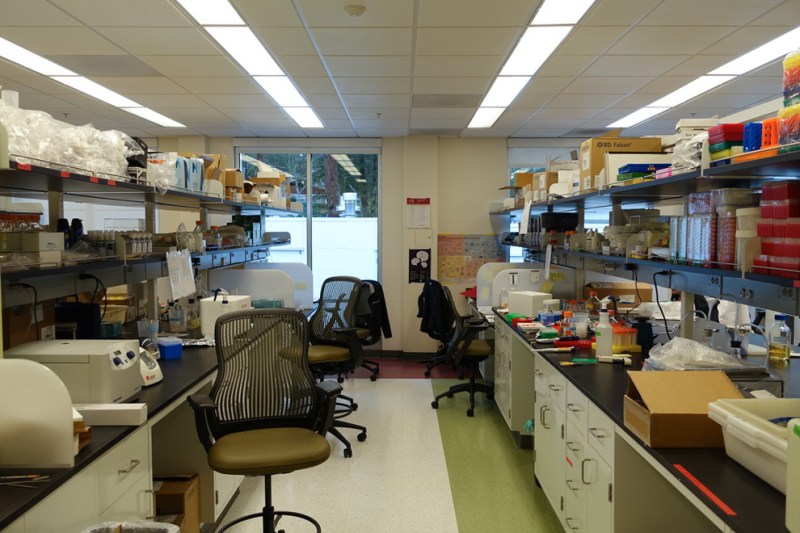Stanford researchers made significant headway in isolating and understanding genes that lead to developmental disorders — helping to accelerate drug discovery and treatments for psychiatric disorders like autism, researchers involved with the study told The Daily.
The study was published last month in Nature and marked the first time researchers attempted to use CRISPR screening, a gene sequencing tool, along with organoids to study over 400 genes.
Neurodevelopmental disorders (NDDs) like ADHD, intellectual disability and autism have long been notoriously difficult to study, largely because the brain is so complex and isolating neuronal movement patterns is complicated. Since it is unethical to perform genetic experiments on humans, researchers said they often have to resort to post-mortem tissue or rodent brains.
“The main goal is to gain access to the process of human brain development,” said psychiatry and behavioral sciences professor Sergiu Pasca, who was the study’s senior author. Pasca and his lab have been trying to understand the intricacies of brain and neuron development for decades by teaching pluripotent stem cells to resemble neurons or glial cells in the brain.
One of their major strides came in 2017 when they created assembloids, artificially grown masses of stem cells that mimicked tissue structures in the brain. They had now created a brain-like environment where neuronal migration behavior and complex cell interactions could be observed.
The recently-published study builds on that technology, integrating assembloids with CRISPR screening, the technology that makes cuts at specifically targeted sites in DNA to help read and identify genes, to study the mechanism of autism spectrum disorders.
“We wanted to understand how autism-related genes affect interneuron development,” said Xiangling Meng, a postdoc in Pasca’s lab and the first author of the paper.
The scientists’ primary research questions were driven by the theory behind potential biological contributors to autism. The brain has two types of neurons: excitatory and inhibitory. Excitatory neurons carry electrical pulses that excite or pass the signal to the next neuron. Inhibitory neurons, on the contrary, stop the signals from being carried forward. Inhibitory neurons are not born in the cortex and so they have to migrate from deeper regions in the brain to find their final position in the cortex. The interactions between these neurons and the migration of interneurons has been hypothesized to be related to autism.
According to Pasca, one of the primary goals of this study was to determine “how many genes impact the migration of the interneurons towards the cortex,” with the overarching goal being to identify biological sub-clusters that are related to autism spectrum disorders.
The team looked at 425 genes linked to neurodevelopmental disorders and ultimately found that about 10% of the 425 genes they looked at interfered with interneuron migration.
Both Pasca and Meng said that one of the key challenges the lab faced was that they had never done experiments with CRISPR before. Since an experiment like this had never been done, they were not sure if it was going to work, Pasca and Meng said.
“Making over a thousand assembloids and growing them over almost a hundred days wasn’t an easy task,” Pasca said.
Yale child psychiatry professor Katarzyna Chawarska works on research that focuses on identifying early diagnostic markers and novel treatment targets for autism spectrum disorders at The Yale School of Medicine. Chawarska, who was not involved in the study, said that although much remains to be done, Pasca’s study represented “an important step toward advancing the gene-brain-behavior mapping.”
“The research has great potential to reveal basic biological processes that give rise to neurodevelopmental disorders,” Chawarska said.
“It’s really an exciting time for human neuroscience,” Pasca said. “I hope that scientists will ultimately be able to use their deep understanding of biological processes to create effective novel treatments for diseases.”
